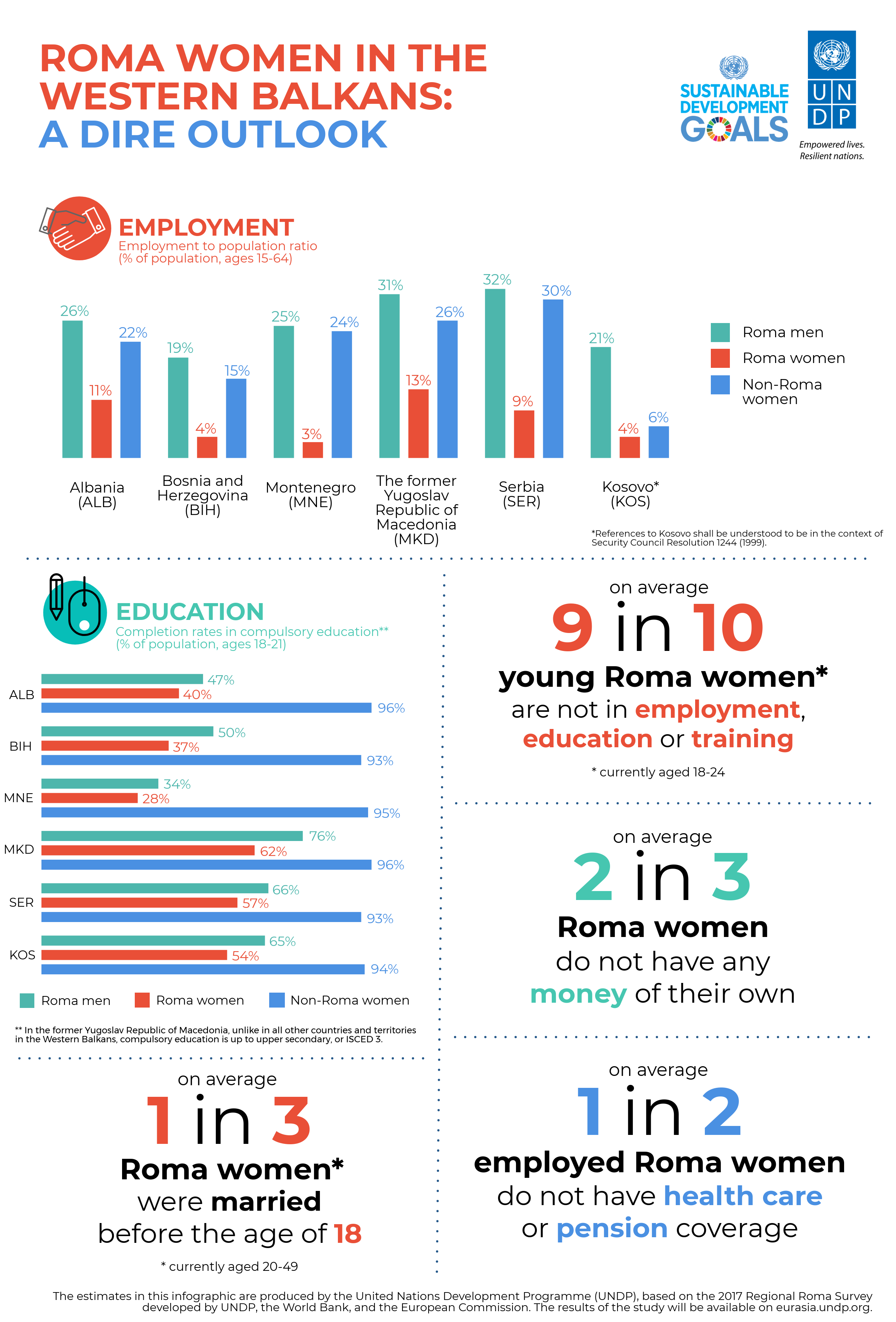Belgrade, May 11, 2018 – The regional study on Roma in the Western Balkans carried out in 2017 showed that marginalized Roma still have limited access to opportunities in all aspects of human development, such as fundamental rights, health, education, housing , employment and standard of living.
In Serbia, there is a significant gap between marginalized Roma and neighboring non-Roma, particularly significant for young people: marginalized Roma aged 18 to 24 are half as likely to be in employment, education or training (27%), compared to 58%. percentage of non-Roma young people. This has lifelong consequences, blocking new opportunities for decent employment. Marginalized Roma aged 15 to 64 are half as likely to be employed as neighboring non-Roma.
In 2017, speaking of education, only 17 percent of marginalized Roma children aged 3 to 6 were enrolled in preschool or above; the vast majority of young, marginalized Roma children were not in school. It should be noted that the gap between Roma and non-Roma in Serbia is the the second largest in the Western Balkans. Regarding primary school, the situation is a little better and, although the proportion of marginalized Roma children of compulsory school age who are enrolled in school is increasing and the enrollment rate is the highest in the Western Balkans, around one in six marginalized Roma children of compulsory school age are still outside the education system. Despite significant improvements, more than a third of marginalized Roma aged 18 to 21 do not have access to basic education. In contrast, almost all neighboring non-Roma counterparts had this level of education. In the higher education segment, the gap between the Roma and non-Roma population in Serbia is the largest compared to all Western Balkan countries. The tertiary education completion rate is a shocking 1%, compared to 23% among non-Roma.
Marginalized Roma in Serbia tend to have lower incomes job than neighboring non-Roma. Just over a fifth of marginalized Roma aged 15 to 64 were employed in 2017, compared to 40% of their neighboring non-Roma counterparts. Only a third of marginalized Roma aged 15 to 64 participated in the labor market in 2017, compared to 52% in 2011. The gap between the two groups doubled over the previous five years.
In the healthcarea positive aspect is that the vast majority of marginalized Roma benefit from health care insurance coverage in Serbia. However, the percentage of marginalized Roma aged 16 and over who reported not having access to health services when needed is much higher than that of neighboring non-Roma and represents just over a quarter of the population. total sample. However, there are some improvements in this area compared to 2011.
When it comes to accommodation, access to electricity and running water increased in 2017 for Marginalized Roma and gaps with neighboring non-Roma are narrowing. At the same time, the lack of waste collection remains a problem affecting a larger share of the Roma population living in marginalized communities.
Almost all marginalized Roma in Serbia now own civil status documents. In 2017, approximately 99 percent of the marginalized Roma population had a birth certificate and 94 percent of people aged 16 and over had a national identity card.
The regional survey on the socio-economic situation of marginalized Roma in the Western Balkans was implemented in 2017 with the support of the Directorate-General for Neighborhood and Enlargement Negotiations (DG NEAR) of the European Commission, in cooperation with the World Bank and in consultation with the Fundamental Council of the EU. Human Rights Agency and other United Nations agencies.
A total of 4,592 marginalized Roma households and 2,168 marginalized non-Roma households participated in the survey.
Additional UNDP research showed that Roma women find themselves in a particularly difficult situation in the Western Balkans. On average, 9 out of 10 Roma women do not work, study or receive any training; Two in three Roma women have no money of their own, while one in two employed Roma women have no health care or pension coverage. The issue of early marriage among marginalized Roma women is still present, and in this regard Serbia ranks second in the Western Balkans, after Albania. Forty percent of marginalized Roma women aged 20 to 49 in Serbia report having married before the age of 18, compared to 9% of non-Roma women from neighboring marginalized communities, which in practice means that on average, 1 in 3 Roma girls married before the age of 18.
The organizations and institutions behind the research hope that the comprehensive and continuous monitoring of indicators of the position of Roma in society will contribute to better policy-making and allow revision of existing strategies and programs for full inclusion of Roma and other marginalized groups in all areas. segments of society.
At the same time, data such as those from the regional survey are necessary to monitor progress towards the 2030 Agenda for Sustainable Development and the achievement of the global Sustainable Development Goals, in line with its cross-cutting principle of “ leave no one behind.” .
National fact sheets from the regional study can be viewed and downloaded at: http://www.eurasia.undp.org/content/rbec/en/home/library/roma/regional-roma-survey-2017-country-fact-sheets.html


